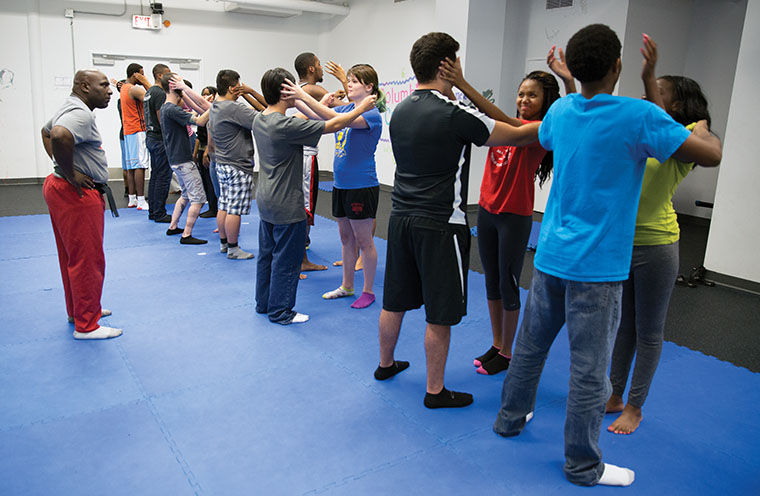Columbia learns to fight back
Terrance Hicks, Columbia’s self-defense instructor, challenged students to go head-to-head against one another.
September 8, 2014
Columbia College is hosting “self-defense and street smarts” sessions, which are sponsored by Fitness and Recreation.
Columbia alumnus Terrance Hicks, the self-defense and martial arts instructor since 2009, will teach the class.
Hicks, a fourth-degree black belt, said many people can fight but few know the proper techniques of self-defense.
“Self-defense has no rules,” Hicks said. “You do whatever it takes to get away or stay alive.”
Hicks wrestled in high school during both his junior and senior years. He said he decided to further pursue martial arts because he was actually bullied.
“I was real small,” Hicks said. “Most of my bullies were big guys.”
Although Hicks’ primary interest is self-defense, he also teaches fighting techniques.
“I teach kicks, punches, finger-thrusting, biting and more,” Hicks said. “I teach these techniques because on the street, things may not go your way and your predator might turn it into a fight. But your job is to quickly end it.”
Hicks said many people do not understand that fighting is brawling but still has an art to it. He said his philosophy is to teach his students that no matter how severe the attack is, end it right there.
Hicks said fighters in boxing, kick-boxing or mixed martial arts on television end fights quickly.
Those actual scenarios are called “stoppages,” he said.
Ralphael Lilly-Mooyoung, one of Hick’s students, said he is learning self-defense because living in Chicago can be very dangerous.
“Over the last few years, I have seen people getting their phones and purses snatched on trains,” Lilly-Mooyoung said.
He has helped Hicks instruct students in the class, and said the skills taught are very helpful.
“You learn how to condition your body, get in shape, protect yourself and become aware of your surroundings,” he said.
The most common situations are with people who do not pay attention to their surroundings, Lilly- Mooyoung said .
“A predator doesn’t want a fight,” he said. “He wants an easy victim.”
Lilly-Mooyoung said sometimes people who are walking and listening to music may be unaware that someone is watching.
“That’s the person the predator goes after,” Lilly-Mooyoung said.
Many of the skills of self-defense are just common sense, he said. In an incident two years ago, he and a friend disembarked from a Chicago Transit Authority train and were faced with a possible altercation. Lilly-Mooyoung said he quickly put his back against a wall so he could protect himself from multi-directional attacks, a skill he learned in the class, he said.
Mark Brticevich, Columbia coordinator of Fitness and Recreation, said one of the purposes of self-defense is to know that not every fight is inevitable.
“Self-defense is understanding yourself, understanding what you are capable of doing and how to control yourself,” Brticevich said.
Everything that happens should become a natural reaction, so it should come without thinking and only with your body reacting, he said.
“It is not about how fast, strong or big you are, but it is about how cunning you are,” Brticevich said.
Brticevich said sessions are free and take place Wednesdays from 4:30–6:00 p.m. and Fridays from 5:30–7:00 p.m.
He encourages everyone to come to the classes with an open mind and be ready to learn, whether they are beginners or have participated in martial arts for years.
“Self-defense is about protecting yourself,” Brticevich said. “You are not trying to hurt someone, you are here to make sure they don’t hurt you in the future.”








